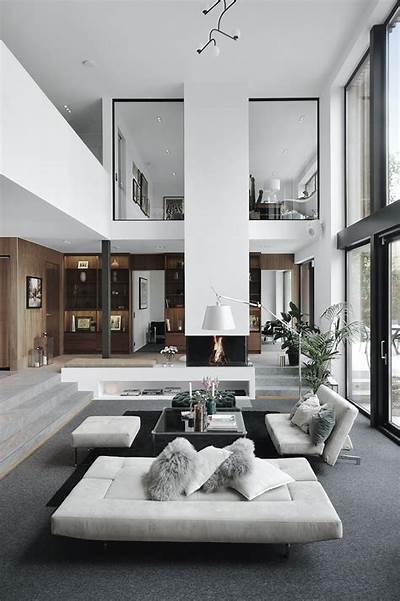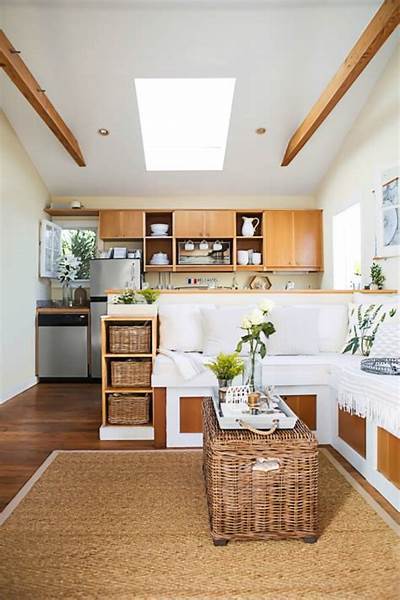New Home Interior Design Trends: Shaping Modern Living
Designing a new home is an exciting, yet daunting, undertaking. The endless possibilities can feel overwhelming, but staying abreast of current trends can help streamline the process and ensure your space reflects your personal style while remaining contemporary and functional. This article explores some of the hottest interior design trends shaping modern living spaces.
Biophilic Design: Bringing the Outdoors In
Biophilic design, the incorporation of natural elements into the built environment, continues to gain popularity. This trend transcends mere decoration; it's about creating a space that fosters a connection with nature, promoting well-being and reducing stress. This is achieved through several strategies:
Key Elements of Biophilic Design:
- Natural Light: Maximizing natural light is crucial. Large windows, skylights, and strategically placed mirrors can amplify the effect.
- Natural Materials: Incorporating wood, stone, bamboo, and other natural materials adds warmth and texture. Think wooden floors, stone countertops, and bamboo furniture.
- Indoor Plants: Plants are a vital element, purifying the air and adding a touch of vibrant life. From small succulents to larger statement plants, greenery transforms a space.
- Natural Colors: Earthy tones such as greens, browns, and creams create a calming and serene atmosphere. These colors can be used on walls, furniture, and accessories.
- Natural Patterns: Incorporating organic patterns, such as wood grain or leaf prints, adds visual interest and reinforces the biophilic theme.

Japandi Style: Minimalism Meets Functionality
Japandi, a fusion of Japanese and Scandinavian design aesthetics, strikes a perfect balance between minimalism and functionality. It emphasizes clean lines, natural materials, and a calming atmosphere.
Defining Characteristics of Japandi:
- Minimalist Approach: Clutter is minimized, prioritizing functionality and essential items. Open shelving and built-in storage are common features.
- Natural Materials: Similar to biophilic design, natural materials such as wood, bamboo, and stone are prevalent. Neutral color palettes are favored.
- Neutral Color Palette: A muted color palette of whites, beiges, grays, and blacks creates a serene and sophisticated atmosphere.
- Simple Lines and Shapes: Furniture and decor feature clean lines and simple shapes, avoiding excessive ornamentation.
- Functional Design: Every item has a purpose and contributes to the overall functionality of the space.

Smart Home Integration: Technology Meets Comfort
Smart home technology is no longer a luxury; it's becoming an integral part of modern living. Integrating smart devices enhances convenience, energy efficiency, and overall comfort.
Smart Home Features for New Homes:
- Smart Lighting: Control lighting levels and schedules remotely through an app, creating mood lighting and energy savings.
- Smart Thermostats: Optimize heating and cooling based on occupancy and preferences, resulting in significant energy savings.
- Smart Security Systems: Enhance home security with smart locks, security cameras, and motion sensors, providing peace of mind.
- Smart Appliances: Control appliances remotely, pre-heating ovens, starting washing machines, and monitoring energy usage.
- Voice Assistants: Integrate voice assistants like Alexa or Google Assistant for hands-free control of various smart home devices.

Maximalist Decor: Embracing Boldness and Personality
In contrast to minimalist trends, maximalist decor celebrates bold colors, patterns, textures, and eclectic combinations. This style reflects a personal and expressive approach to interior design.
Key Features of Maximalist Design:
- Bold Color Palettes: Embrace vibrant and contrasting colors, creating a visually stimulating environment.
- Layered Textures: Combine various textures through fabrics, materials, and finishes to add depth and visual interest.
- Eclectic Mix of Styles: Mix and match different styles and eras, creating a unique and personalized look.
- Abundance of Accessories: Incorporate numerous accessories, artwork, and decorative objects to personalize the space.
- Statement Pieces: Use statement pieces of furniture or artwork as focal points to draw the eye.

Sustainable Design: Eco-Conscious Choices
Sustainability is becoming increasingly important in interior design. Choosing eco-friendly materials, reducing waste, and promoting energy efficiency are key elements of sustainable homes.
Sustainable Design Practices:
- Recycled and Reclaimed Materials: Incorporate recycled wood, reclaimed lumber, and other sustainable materials.
- Low-VOC Paints and Finishes: Reduce exposure to harmful chemicals by opting for low-VOC (volatile organic compound) paints and finishes.
- Energy-Efficient Appliances: Choose energy-efficient appliances to reduce energy consumption and utility bills.
- Water-Conserving Fixtures: Install low-flow showerheads and faucets to reduce water waste.
- Natural Lighting and Ventilation: Maximize natural light and ventilation to reduce the need for artificial lighting and air conditioning.

These trends offer a glimpse into the diverse and evolving world of interior design. The best approach is to find a style that reflects your individual tastes and preferences, creating a home that is both beautiful and functional.


この記事へのコメント